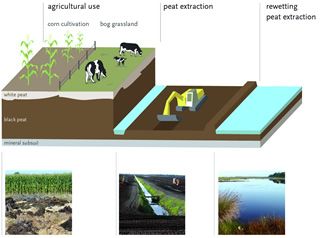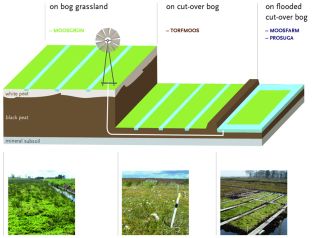Sphagnum Farming Projects
At the University of Greifswald four research projects have been studying the cultivation of Sphagnum since 2004 on degraded raised bog sites. The projects aims to find alternatives to destructive forms of land use on peat soils such as maize cultivation, grassland use, and peat mining. Instead, these land uses should be replaced with peat conservation and sustainable cultivation of Sphagnum under wet conditions.
Cultivated Sphagnum on the experimental site Ramsloh. Use of peatlands as grassland represents the largest land use in terms of area that could be converted to Sphagnum cultivation. To ensure sufficient water supply for peat moss cultivation it may be necessary to establish water reservoirs. Evaporation can be minimized by covering the water surface with floating rafts bearing cultivated Sphagna. An array of different cultivation systems could present an optimal constellation for Sphagnum farming on degraded raised bog sites. Additionally, Sphagnum cultivation on floating rafts can be used on lakes that develop after open-pit mining of lignite.
Pattern of degraded raised bog areas; current land use [left]; Pattern of degraded raised bog areas; potential Sphagnum farming [right]
Research objectives in the four projects focus on all aspects of production methods on peat and artificial water bodies as well as on the horticultural applicability of Sphagnum biomass as growing medium and potential environmental effects:
- production of diaspores
- establishment of cultivation areas
- methods of maintenance and harvest
- processing of Sphagnum biomass as a growing medium
- ecological assessment
- horticultural trials
- environmental monitoring of cultivation areas
- climate protective effects
Details of contents and results are shown in the introduction of each project respectively.
Project List
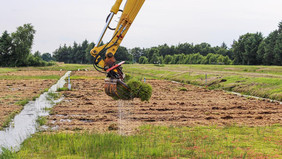
MOOSland
Small plant, big impact – for a sustainable agricultural use of raised bog soils MOOSland is is developing peat moss cultivation on around 30 hectares.
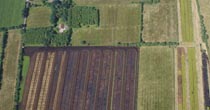
OptiMOOS
Joint research project „Optimising Sphagnum farming: water management, climate impact, biodiversity & product development“.
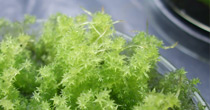
MOOSzucht
Breeding and mass propagation of peat moss in Sphagnum farming to create a sustainable supply of renewable raw material for horticultural growing media.
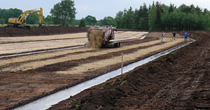
MOOSGRÜN
Field trial on Sphagnum farming on formerly used raised bogs.
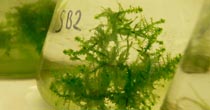
PROSUGA
Sphagnum as growing medium for market gardening.
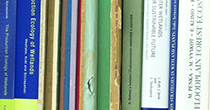
Literature review
About Sphagnum as renewable raw material.
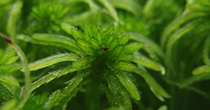
TORFMOOS
Sphagnum farming on formerly cutted raised bogs.
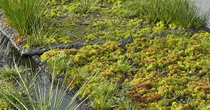
MOOSFARM
Sphagnum farming on floating vegetation mats.

Sphagnum farming Georgia
Potential for Sphagnum farming in the Colchis, Georgia.












